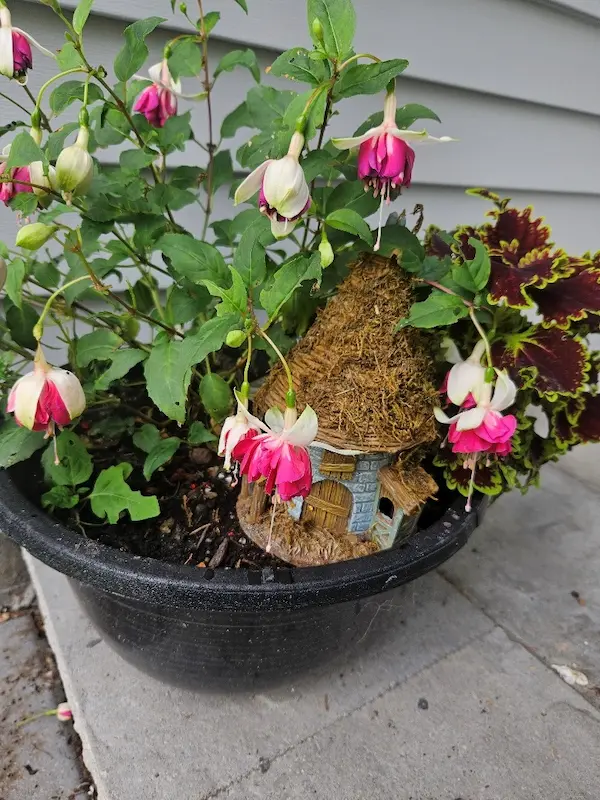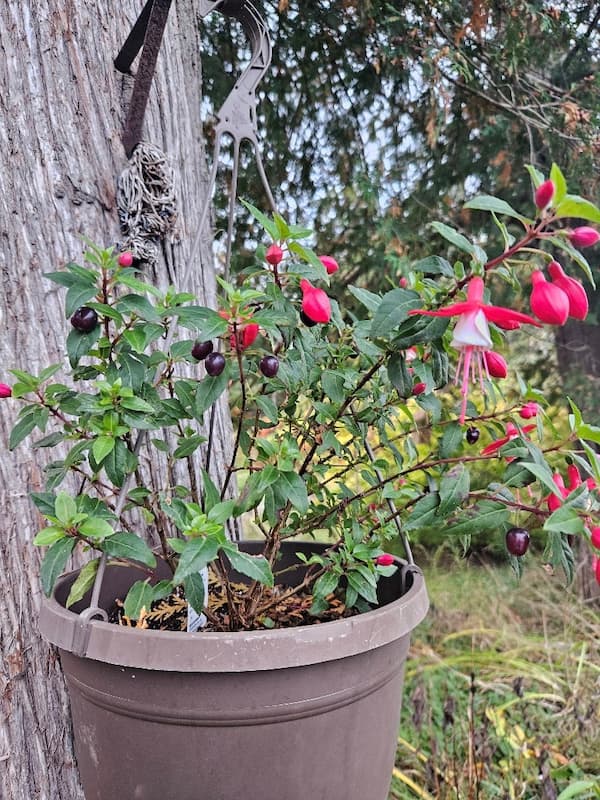Your cart is currently empty!
Why is composting good for the environment?
Composting has numerous environmental benefits from waste reduction to soil enrichment! Learn how composting contributes to a sustainable future for our planet.
Your cart is currently empty!
Photo:
A healthy Boxcar Willie tomato, courtesy Judith Cox
Greetings, fellow gardeners,
Life has been very busy, and now the breezes of autumn are in the air. As usual, my garden has not gone in the direction that I had planned, but it is still giving me peace and surprises.
I have been scrambling to collect seeds. My tomatoes were not happy this year, and I want to be sure to get seeds from my favourites. My Polish raspberry tomato had poor germination, and I ended up having to replant it. I was relieved to see two little red tomatoes on it a week ago, and when I went to pick them, I found that someone had taken them away! There are two little green ones left, and I put them in a mesh bag, hoping they will ripen before frost. You will find that as long as there is some jelly-like substance around the seed, it should be viable. I discovered that the new area where I decided to put my tomato pots did not have enough sun. Next year, they will move to a better spot. I also found that one tomato with huge, delicious fruit needed to be in the ground. In addition, this tomato is going to need a lot more support. I was so relieved when my new heritage tomato finally ripened. Who could resist a tomato called Boxcar Willie? Very tasty too, but it could have used more sunshine.
How do I plant in soil when it is full of roots and rocks? I have chosen a sunny area and will work on the soil now so that in the spring, I will have an area that can be used. I am digging down about four or five inches, or as far as the roots and rocks will let me, and putting compost and manure down, then putting the soil back. I am also laying fresh manure and compost on top along with fallen leaves and leaving this soil sandwich to sit over the winter. I know there will be many rocks, so I can put them to one side to be shelter for the snakes and other creatures.
Every year I like to grow fuchsias. I loved them as a child because they looked like fancy earrings. This year I picked one up because I loved the name. It is called the Flying Scotsman Fuchsia. It took forever to bloom, but when it did, it was spectacular. What a treat.

I also grew a miniature fuchsia that decided to produce lots of seeds. I am saving the seeds to see if it is at all possible for me to grow them. Fuchsia seeds look like blueberries.

For the next week or so I will be adding soil and compost to my garden and pulling out dahlias, cannas and gladiolas. I don’t do a big clean up but I always clean up around the tomatoes. The tomato plants go in the green bin, not the compost. My compost is not hot enough to kill the blight that tomatoes tend to get. I also cut back my peonies as I find they get mold and mildew, and I don’t want that spreading in my garden.
All of my asters and goldenrods are full of seeds, and they will make great snow catchers when the winter arrives.
The too-many cats are staring at the woodstove, so I guess I shall be bringing in wood soon. The chickadees are foraging for seeds and the trees are full of colour. This time of year is so beautiful. Enjoy your week. Judith (Email: sghorticultural@gmail.com) Veggie Bites are available at https://sghorticultural.wixsite.com/website or https://gardeningcalendar.ca/category/veggie-bites.
Logging in to comment gives you more features, but it is not required.
Composting has numerous environmental benefits from waste reduction to soil enrichment! Learn how composting contributes to a sustainable future for our planet.
Apartment plants are a great way to add some green to any space, and they’re not as hard to maintain as you might think.
We introduce the many benefits to gardening. Becoming in tune with nature, teaching responsibility, health benefits both physical and mental.
Growing microgreens from seed does not require a fancy set-up. You can use a plastic tray with drainage holes with a see-through lid.
May is Lyme Disease Awareness month. With more time outdoors in spring and summer, re-visit methods of protection from ticks.
Some of your trees or plants might wilt or die after transplant. Prevent transplant shock by taking these preventative measures!
GardeningCalendar.ca gets some funding from advertisers. If you click on links and advertisements at no cost to you, the site may receive a small commission that helps fund its operation.
© 2025 J&S Calendars Ltd.